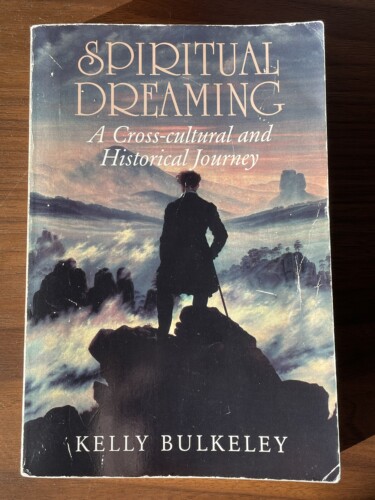 An academic dissertation is written in compliance with a host of official requirements designed to focus the project and give it the best chance of successful completion. Those requirements definitely influenced how my dissertation and first book, The Wilderness of Dreams (1994), came to be what it is. As I sat down to write my second book, I remember a moment of almost dizzy uncertainty about taking the first steps forward. I knew even before finishing WD that I wanted to write a book about the religious and spiritual aspects of dreaming through history. The first chapter of my dissertation offered a survey of that material, but I had accumulated a larger store of references, much more than could be presented in a single chapter. A book-length study seemed worthwhile, but what exactly would it look like?
An academic dissertation is written in compliance with a host of official requirements designed to focus the project and give it the best chance of successful completion. Those requirements definitely influenced how my dissertation and first book, The Wilderness of Dreams (1994), came to be what it is. As I sat down to write my second book, I remember a moment of almost dizzy uncertainty about taking the first steps forward. I knew even before finishing WD that I wanted to write a book about the religious and spiritual aspects of dreaming through history. The first chapter of my dissertation offered a survey of that material, but I had accumulated a larger store of references, much more than could be presented in a single chapter. A book-length study seemed worthwhile, but what exactly would it look like?
What emerged was a first foray into the typologies of dreaming. Shaped and inspired by the ideas of Mircea Eliade, Rudolf Otto, Wendy Doniger, and Harry Hunt, I cast a wide net across historical and cross-cultural sources for references to dreams and dreaming. Then, taking into account the provisional nature of all such typologies, I grouped these references into what seemed to me to be natural categories, natural in the sense of sharing core features (of imagery, emotion, and carry-over effects) across differences of time and place. In this sense, Spiritual Dreaming was a history of religions project, using dream research as the means of comparison. These are the categories I identified and discussed, one per chapter:
- The Dead
- Snakes
- Gods
- Nightmares
- Sexuality
- Flying
- Lucidity
- Creativity
- Healing
- Prophecy
- Rituals
- Initiation
- Conversion
For each dream category, I gathered examples from multiple cultures, religious traditions, and periods of history and discussed them in relation to current dream research, from Freud and Jung to current brain-mind science. These categories and my initial ideas about their psycho-spiritual coherence remain vital influences on my work. The four appendices are especially important in formulating several early theses about dreaming and philosophy that I hope to expand upon at some point in the future.
This was also an important text for me in trying to create a space to talk about dream-related beliefs, practices, and experiences that can be described as religious and/or spiritual. I think it helps clarify the true nature of dreaming to include religious and spiritual perspectives, and after explaining what I do and don’t mean by these terms at the beginning of the book, I put the analytic emphasis on the dreams themselves to see what we can learn from them.
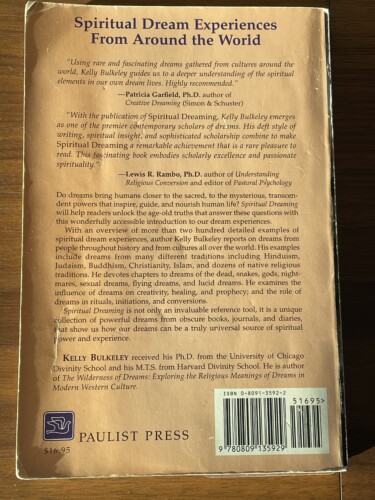 My friend and mentor Jeremy Taylor had published Dream Work (1983) with Paulist Press and spoke highly of their editor, Lawrence Boadt. That’s how I came to make an arrangement with Paulist to publish Spiritual Dreaming, with back-cover endorsements from Patricia Garfield and Lewis Rambo. Patricia was a co-founder of the IASD and author of several well-regarded books on dreams, and Lewis was a professor of religion and psychology at San Francisco Theological Seminary and my faculty sponsor at the Graduate Theological Union, where I had become a Visiting Scholar after leaving Chicago.
My friend and mentor Jeremy Taylor had published Dream Work (1983) with Paulist Press and spoke highly of their editor, Lawrence Boadt. That’s how I came to make an arrangement with Paulist to publish Spiritual Dreaming, with back-cover endorsements from Patricia Garfield and Lewis Rambo. Patricia was a co-founder of the IASD and author of several well-regarded books on dreams, and Lewis was a professor of religion and psychology at San Francisco Theological Seminary and my faculty sponsor at the Graduate Theological Union, where I had become a Visiting Scholar after leaving Chicago.
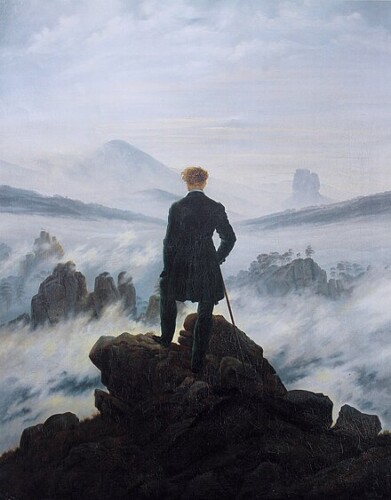 The front cover is a painting from Caspar David Friedrich, Wanderer Above a Sea of Fog (1818), a classic of early Romantic aesthetics, although I didn’t know that at the time—I just liked the way this image balanced the cover of WD, which was set deep inside a Redwood-lined creek; here with SD, we’re reaching the top of the ridge and discovering a big open view to enjoy.
The front cover is a painting from Caspar David Friedrich, Wanderer Above a Sea of Fog (1818), a classic of early Romantic aesthetics, although I didn’t know that at the time—I just liked the way this image balanced the cover of WD, which was set deep inside a Redwood-lined creek; here with SD, we’re reaching the top of the ridge and discovering a big open view to enjoy.
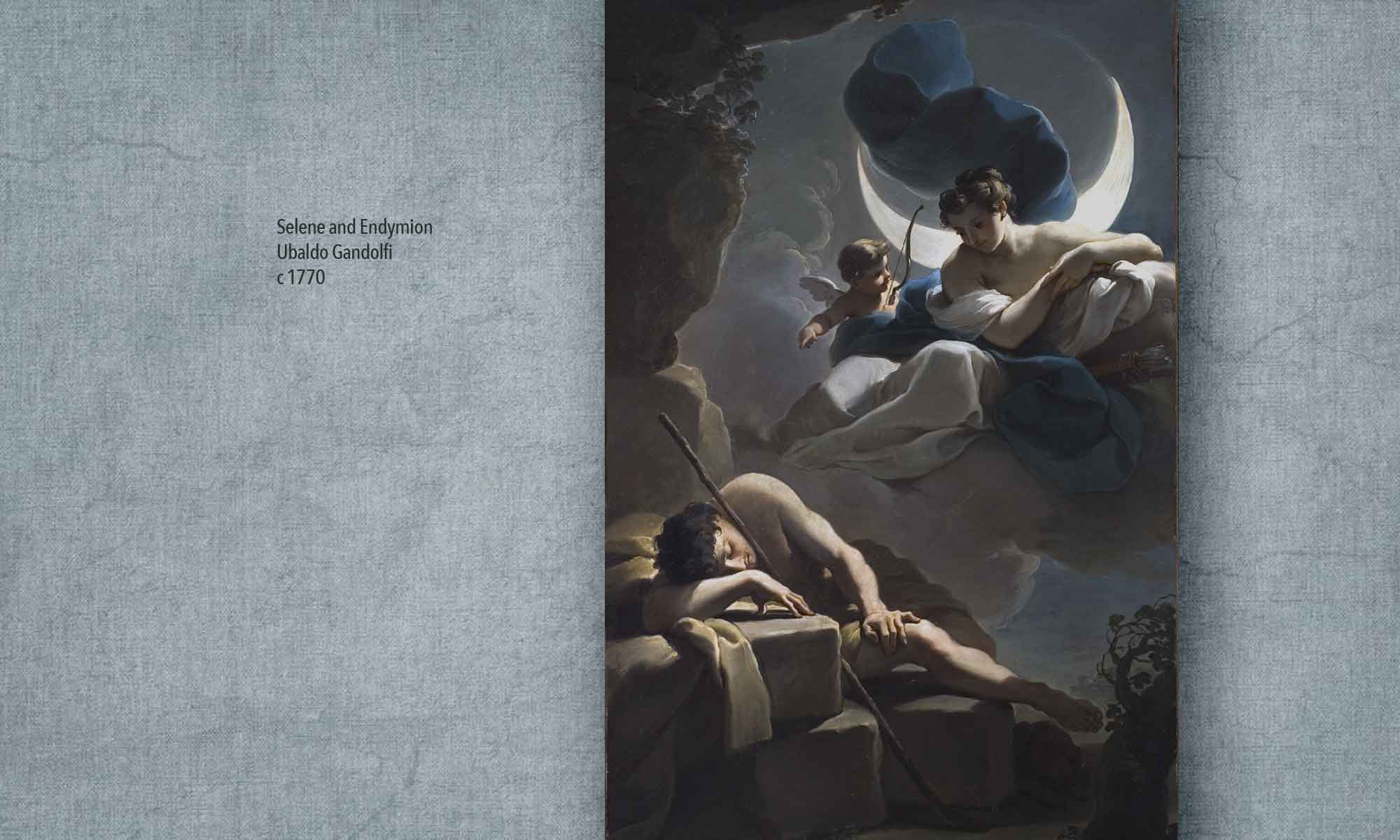

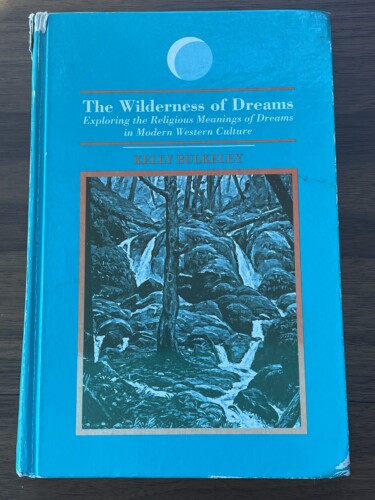 It took some persuading, but SUNY agreed to use as cover art a painting from my good friend
It took some persuading, but SUNY agreed to use as cover art a painting from my good friend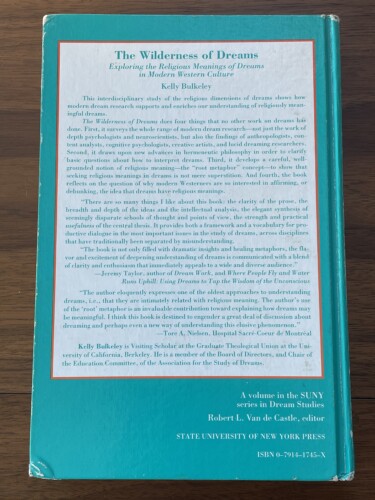
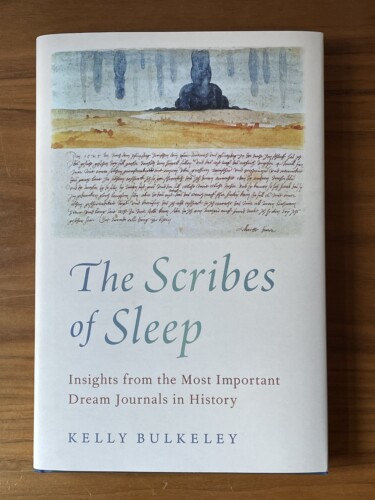 My latest book, The Scribes of Sleep, has just been published by Oxford University Press. It’s a work dedicated to people who keep dream journals, as a new resource for learning more about the fascinating and largely unknown history of dream journal practices. The book is also intended as an argument in favor of dream journals as a valuable source of empirical data for scientific research into the nature and functions of dreaming.
My latest book, The Scribes of Sleep, has just been published by Oxford University Press. It’s a work dedicated to people who keep dream journals, as a new resource for learning more about the fascinating and largely unknown history of dream journal practices. The book is also intended as an argument in favor of dream journals as a valuable source of empirical data for scientific research into the nature and functions of dreaming.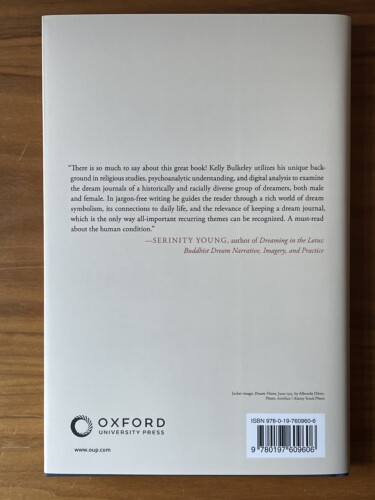
 Most people who keep a dream journal are initially motivated by simple curiosity and the hope they will gain insights into their waking lives. But as they continue with the journaling and track the emerging patterns of their dreams over time, they often find the process becomes something more than that, something that develops a life of its own and opens into a new relationship with the unconscious realms of their minds.
Most people who keep a dream journal are initially motivated by simple curiosity and the hope they will gain insights into their waking lives. But as they continue with the journaling and track the emerging patterns of their dreams over time, they often find the process becomes something more than that, something that develops a life of its own and opens into a new relationship with the unconscious realms of their minds.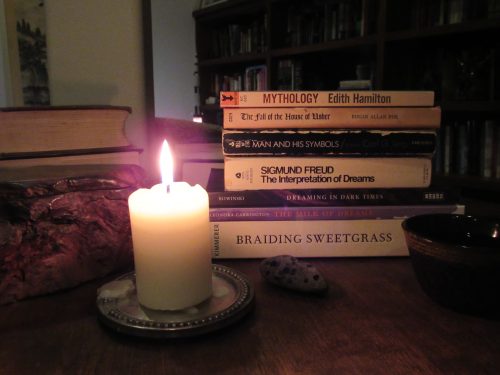 A Dream Library is a playground for studying and dreaming: for studying while dreaming, and dreaming while studying. It’s a spatial technology for stimulating your oneiric imagination. It’s not a shrine to dreaming, but it’s not not a shrine to dreaming, either. It’s your personally crafted portal into the intuitive depths of your own mind.
A Dream Library is a playground for studying and dreaming: for studying while dreaming, and dreaming while studying. It’s a spatial technology for stimulating your oneiric imagination. It’s not a shrine to dreaming, but it’s not not a shrine to dreaming, either. It’s your personally crafted portal into the intuitive depths of your own mind. People make many strange and unexpected discoveries when they begin exploring their dreams. Of these discoveries, perhaps the most surprising is an uncanny encounter with images, themes, and energies that can best be described as spiritual or religious. It’s one thing to realize you have selfish desires or aggressive instincts; it’s another thing entirely to become aware of your existence as a spiritual being. Yet that is where dreams seem to have an innate tendency to lead us—straight into the deepest questions of human life, questions we find at the heart of most of the world’s religious traditions.
People make many strange and unexpected discoveries when they begin exploring their dreams. Of these discoveries, perhaps the most surprising is an uncanny encounter with images, themes, and energies that can best be described as spiritual or religious. It’s one thing to realize you have selfish desires or aggressive instincts; it’s another thing entirely to become aware of your existence as a spiritual being. Yet that is where dreams seem to have an innate tendency to lead us—straight into the deepest questions of human life, questions we find at the heart of most of the world’s religious traditions.